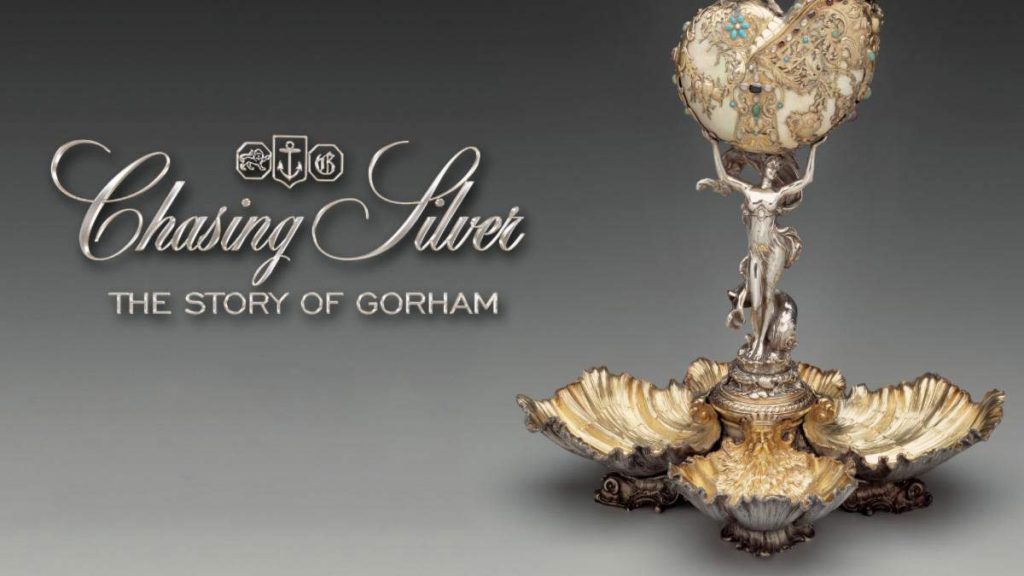Chasing Silver – The Story of Gorham episode 3: New designers leave their mark on the Gorham silver brand, while a climate of hostile takeovers and corporate mergers leaves Gorham grappling with an unstable future. Discover the bold ingenuity, brilliant artistry, and storied legacy of the local, world-class silversmithing foundry, Gorham Manufacturing. Chasing Silver: The Story of Gorham, a three-part series, follows the company from its origins as a small workshop to its rise as a global silver manufacturing titan.
Driven by the characters and events that fashioned Gorham’s success and ultimate demise, the series examines the delicate craft of silver design and the crushing toll of mass manufacturing. The Gorham Manufacturing Company is one of the largest American manufacturers of sterling and silverplate and a foundry for bronze sculpture. Gorham Silver was founded in Providence, Rhode Island, 1831 by Jabez Gorham, a master craftsman, in partnership with Henry L. Webster.
The firm’s chief product was spoons of coin silver. The company also made thimbles, combs, jewelry, and other small items. In 1842, the Congress enacted a tariff which effectively blocked the importation of silverware from outside the United States, which aided the American silver industry. Jabez Gorham did not take full advantage of this opportunity, but in 1847 Jabez retired and his son, John Gorham succeeded him as head of the company.
John Gorham introduced mechanized production methods, enlarged the premises in downtown Providence, improved the designs, and expanded the product line. In 1852, Gorham toured many of Europe’s silver workshops and manufacturers, speaking with individual specialists, including master craftsmen and toolmakers. He sought highly skilled foreign workmen to train his American workers and hired George Wilkinson, a premier designer and workshop manager, from England. In 1865, the Rhode Island legislature granted a charter in the name of Gorham Manufacturing Company and in 1890, the company relocated to a factory on Adelaide Avenue in Providence.
Chasing Silver – The Story of Gorham episode 3
During the heyday of American silver manufacturing, approximately 1850–1940, Gorham was highly influential. William Christmas Codman, one of Gorham’s most noted designers, created the Chantilly design in 1895, which has become the most famous of Gorham’s flatware patterns. The company has produced matching hollowware in both sterling and silverplate.
In 1884, the company opened a store in the Ladies’ Mile shopping district in Manhattan, New York City, but moved in 1905 to a Fifth Avenue building which it commissioned from architect Stanford White. In 1906, Gorham purchased another long-time rival, New Jersey-based Kerr & Co. In 1924, the company absorbed the Massachusetts jewelry company Whiting Manufacturing Company, founded by William Dean Whiting in 1866.
Textron purchased the company in 1967, a move that some critics claim decreased quality due to management’s lack of understanding of Gorham’s specialty, producing high-quality sterling silverware and holloware. Textron began planning to sell the unit in 1988, completing the sale in 1989 to Dansk International Designs. Brown-Forman Corporation acquired Gorham from Dansk in 1991. The unit was sold in 2005 to Department 56 in the Lenox holdings transaction, with the resulting company renamed as Lenox Group.
However, in 2009 Lenox Group filed for Chapter 11 bankruptcy and it was subsequently acquired by Clarion Capital Partners, now operating under the name Lenox Corporation, which has three operating divisions, Lenox, Dansk, and Gorham.




